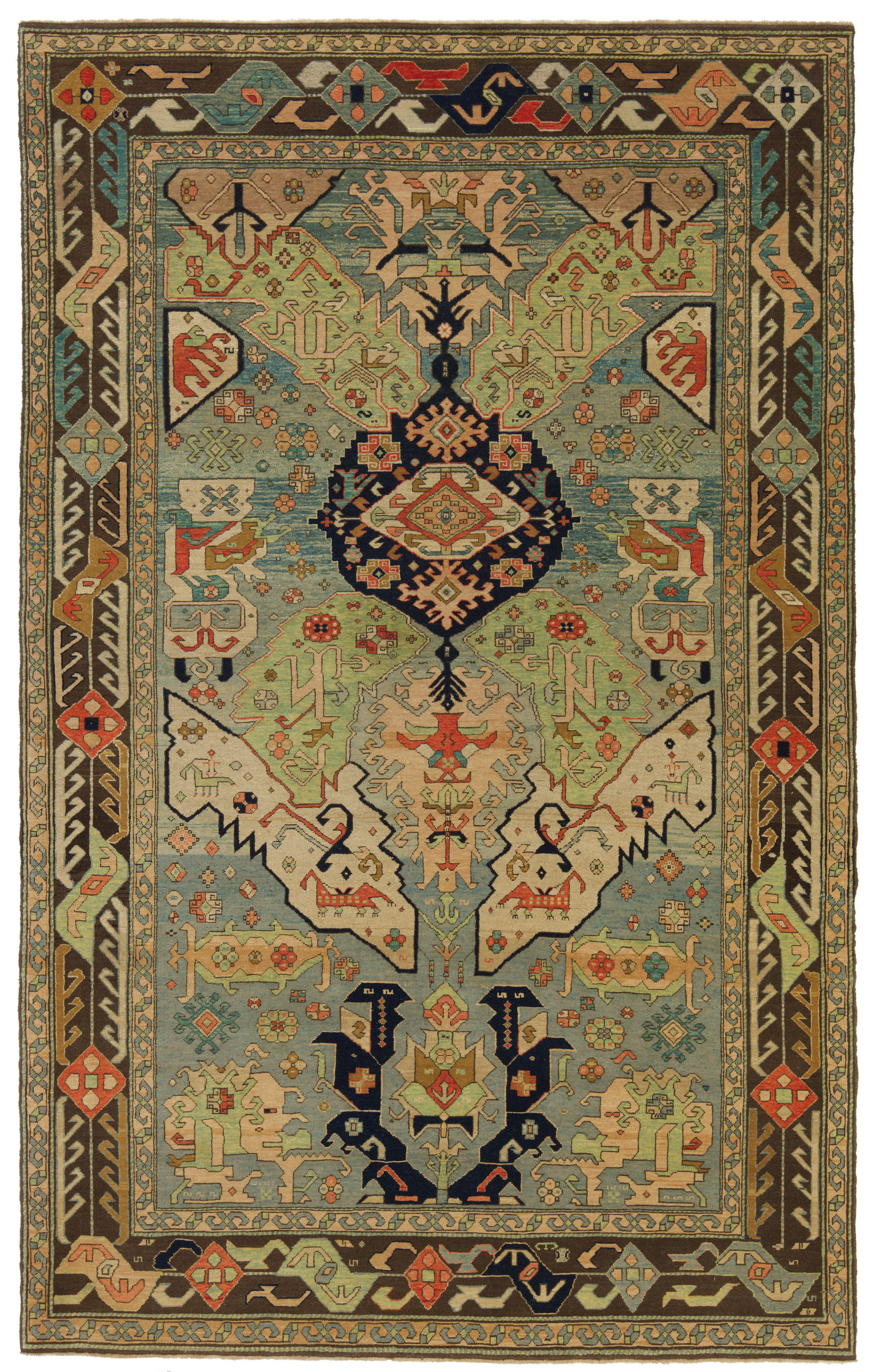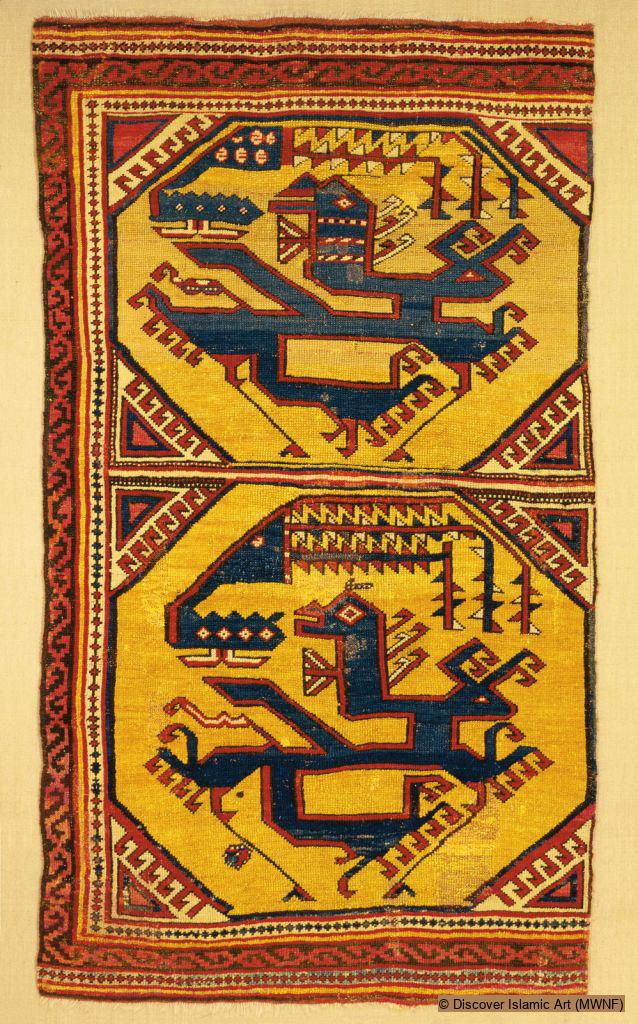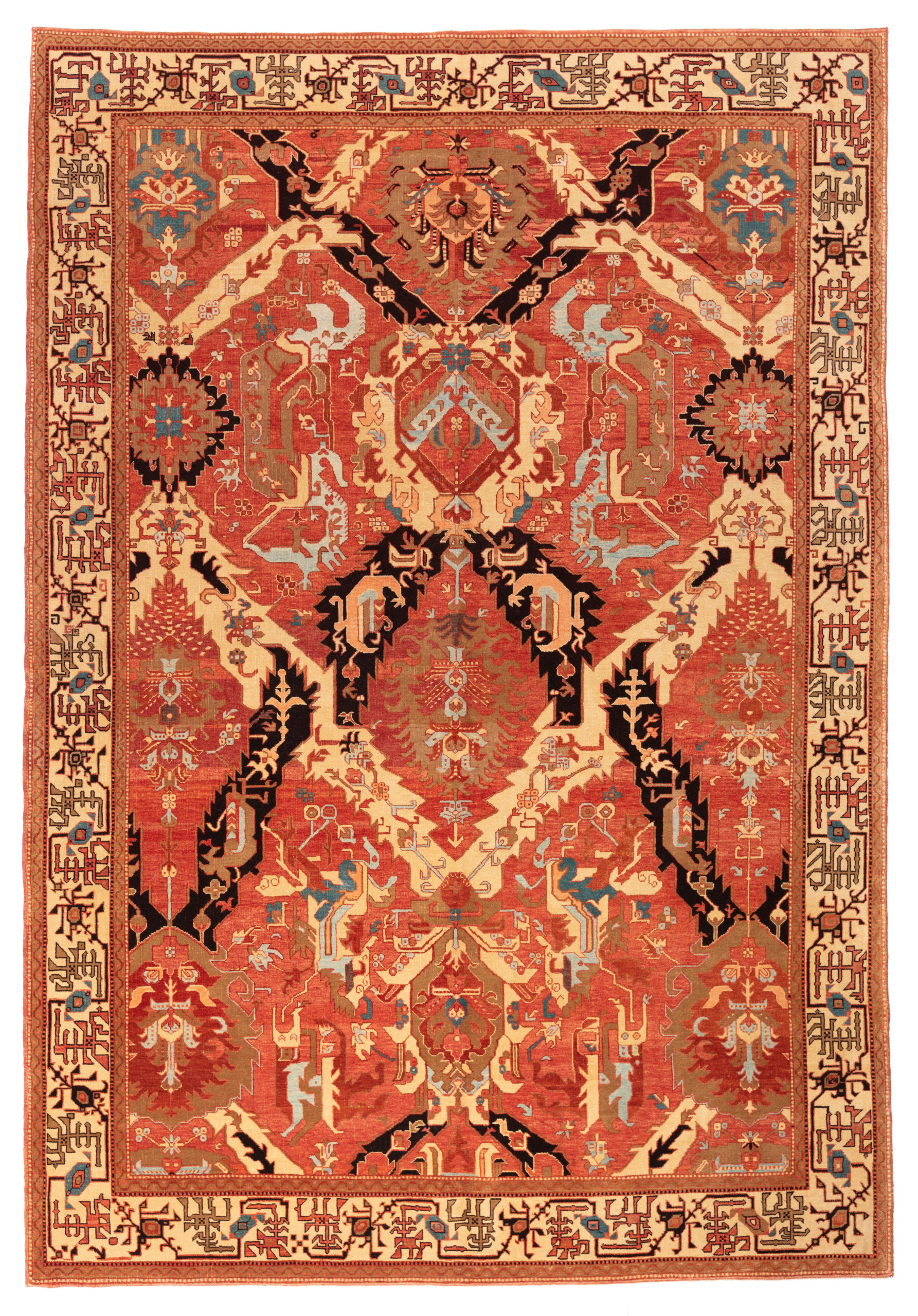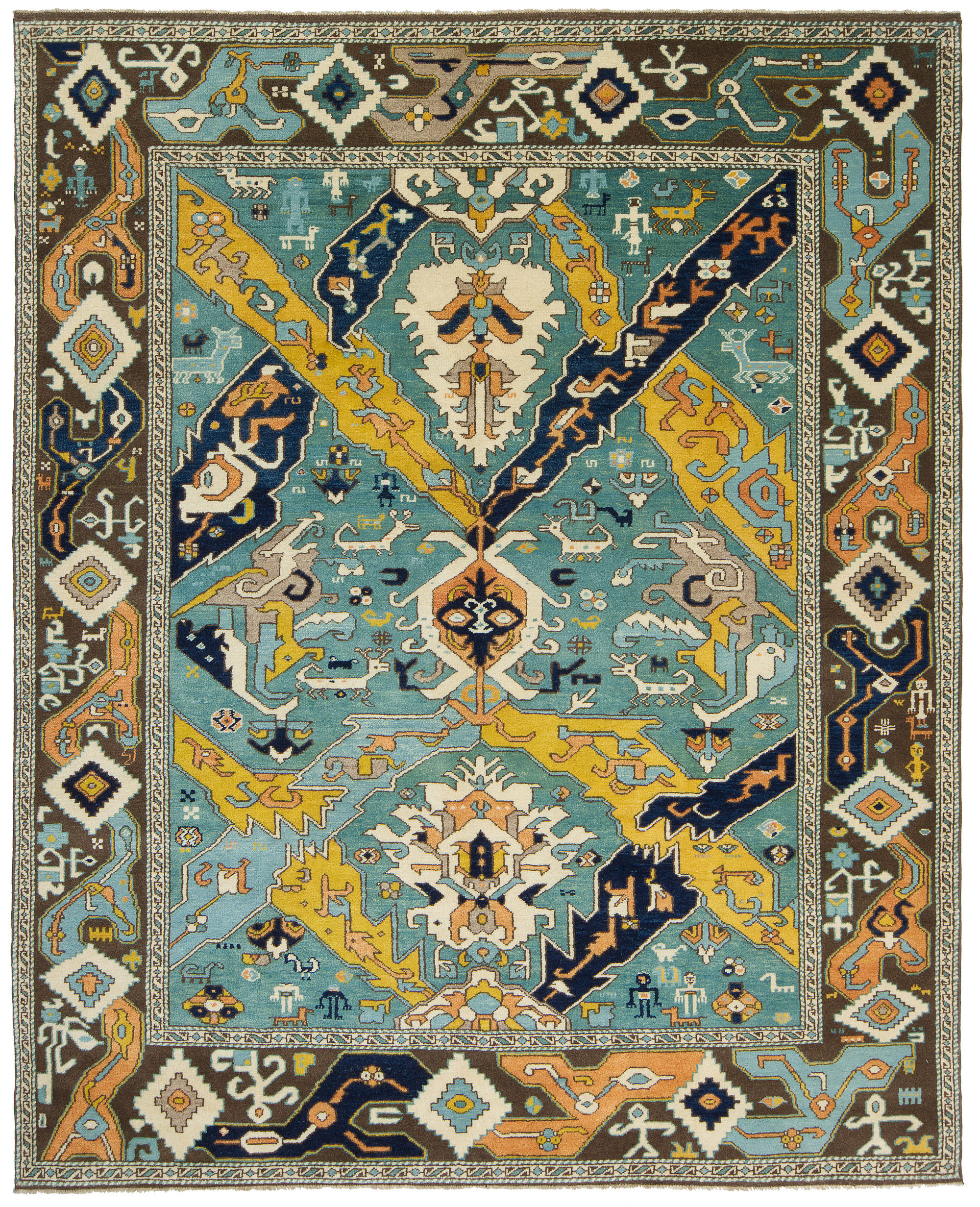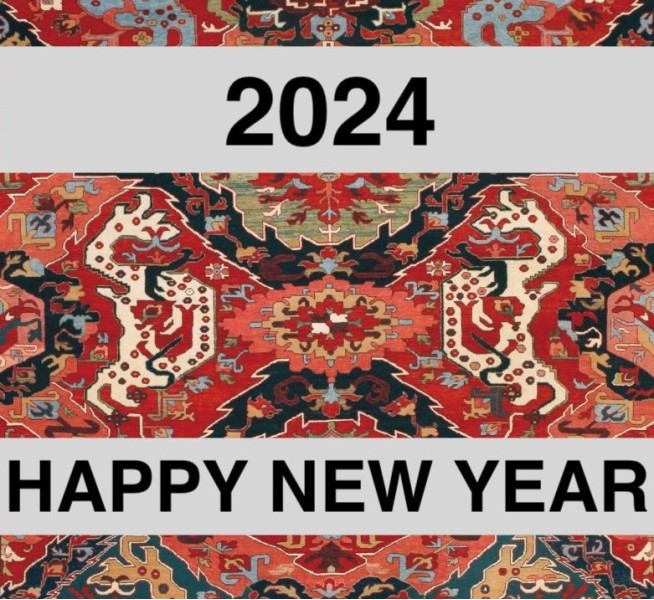
As the Year of the Dragon unfolds in 2024, a resurgence of interest in symbolic decor and ancient traditions has captivated enthusiasts worldwide. Beyond the Chinese dragon symbolism, a unique facet of this trend has emerged – the allure of antique Caucasian dragon rugs. This article will delve into the rich history of these mesmerizing rugs, exploring their cultural significance, the craftsmanship involved, and the timeless appeal that makes them a prized addition to any collection.
Caucasian Dragon Rugs: A Historic Tapestry:
Originating from the culturally diverse and historically significant region of the Caucasus, antique Caucasian dragon rugs stand as silent witnesses to the artistry and craftsmanship of ancient civilizations. The Caucasus, nestled between the Black Sea and the Caspian Sea, has been a melting pot of various cultures, resulting in a unique blend of artistic expressions, including rug weaving.
Unlike their Chinese counterparts, Caucasian dragon rugs often feature a more abstract and stylized representation of dragons. The dragon motif is interwoven with other symbolic elements, such as geometric patterns, floral designs, and vibrant colors, reflecting the cultural diversity and influences of the region. These rugs were not merely functional pieces but were imbued with spiritual and protective qualities, reflecting the beliefs and values of the communities that created them.
-As we embark on the Year of the Dragon, the allure of antique Caucasian Dragon Rugs adds a unique and culturally rich dimension to the celebration. These rugs, with their historical tapestry, symbolism, and masterful craftsmanship, stand as a testament to the enduring legacy of the Caucasus region. Embracing these antique treasures not only brings a touch of mystique to your living spaces but also fosters a deeper appreciation for the interconnectedness of art, culture, and the passage of time.’ -Hakan KARAR
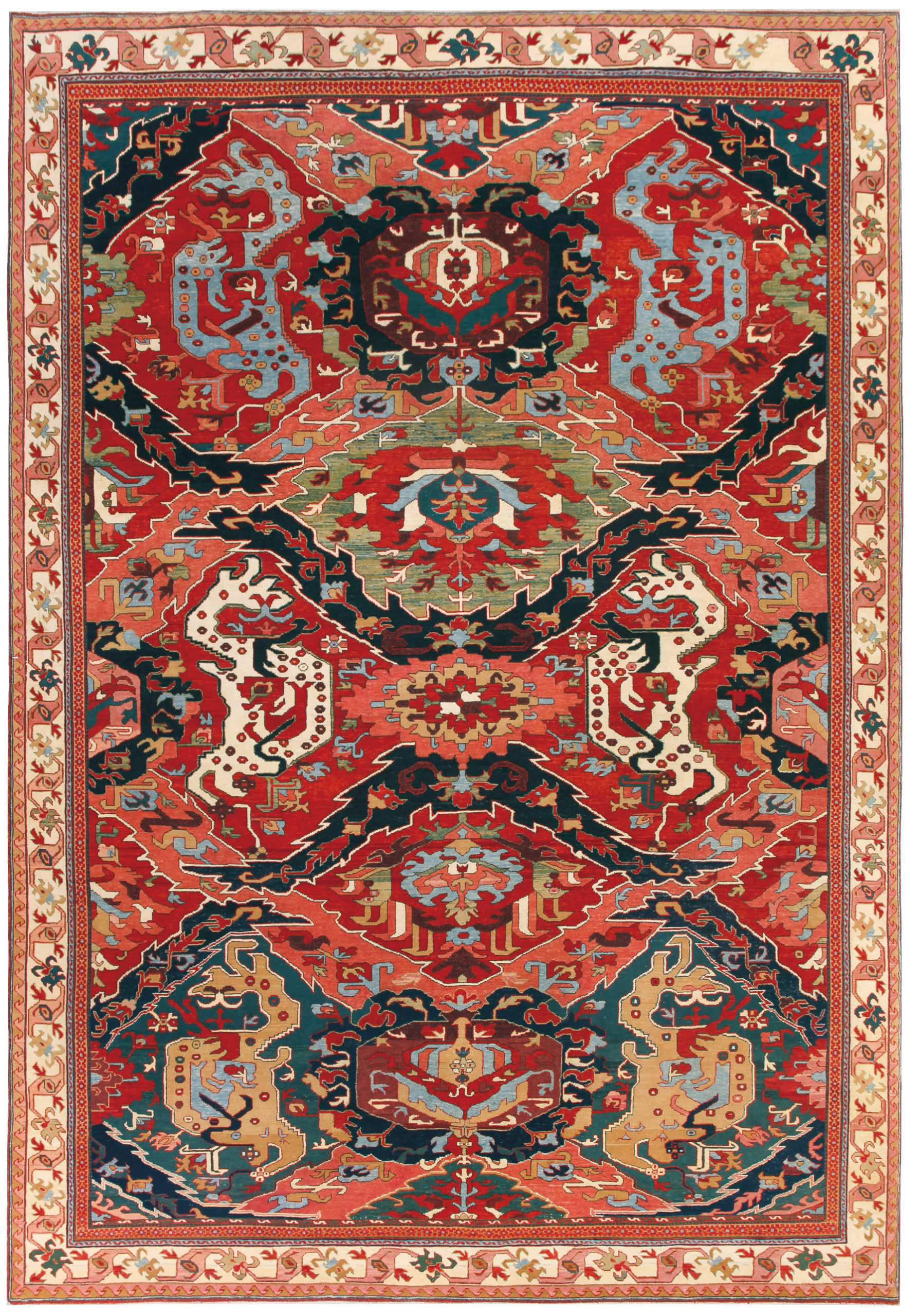
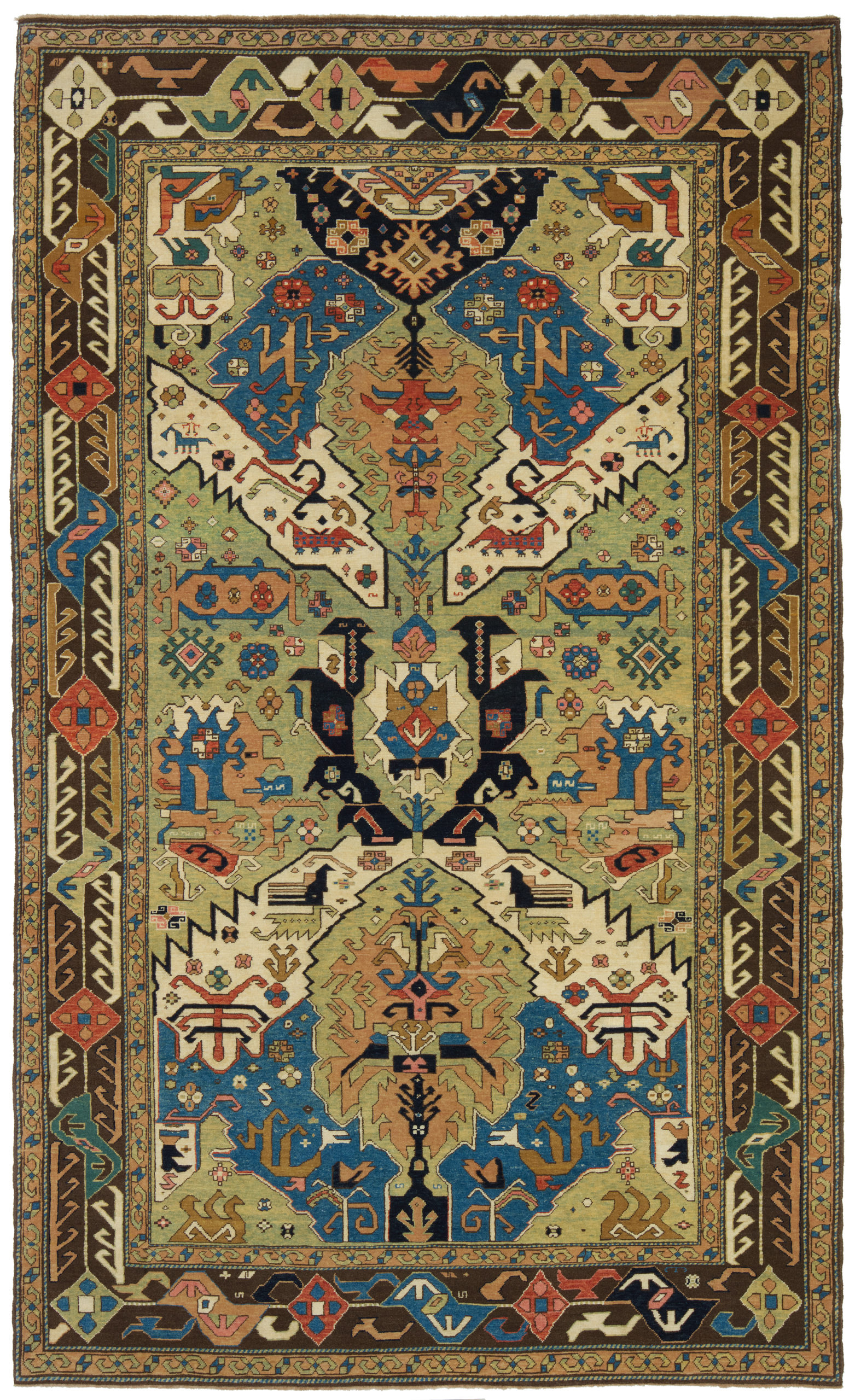
Explore Ararat Rugs Caucasian Dragon Rugs Collection
Crafting antique Caucasian dragon rugs was a laborious process that demanded skill, patience, and an understanding of traditional techniques. Artisans employed natural dyes derived from plants and minerals to achieve these rugs' vibrant and enduring colors. The meticulous knotting and weaving techniques resulted in rugs that not only told stories of the region's history but also showcased the incredible craftsmanship of the people who created them.
As time has passed, genuine antique Caucasian dragon rugs have become increasingly rare and valuable. The passage of centuries has added to their allure, with each rug carrying a unique story of the people, cultures, and artistic traditions of the Caucasus. Collectors and enthusiasts recognize the historical significance of these rugs, making them sought-after pieces that transcend mere decoration, becoming artifacts that connect us to a bygone era.
Caucasian Dragon Rug in Ararat Rugs Collection:
It has been suggested that the earliest examples of the Caucasian' Dragon' carpets have more repeats across the width of the weaving than in later pieces. An example of a 'Four-Dragon' carpet, coincidentally from the collection of Charles Deering as the present carpet, was sold in Sotheby's, New York, 27 September 2000, lot 35. Animal combat groups were popular motifs in the late 16th and early 17th century, appearing in Persian paintings, book covers, and, of course, within the magnificent carpets of the Safavid court, from which it is probable that Caucasian 'Dragon' carpets were modeled (Duncan Haldane, Islamic Bookbindings in the Victoria and Albert Museum, London, 1983, no.106, pp.110-111, for example). Many classical Caucasian carpets of the 17th and early 18th centuries can be traced back to the 'Vase' carpets of the 17th century. The lattice used in these carpets relates to the lattice of 'Vase' carpets (Ellis, op. cit, pp.12-13). Still, already in the present early 'Dragon' carpet, the coloring of the serrated panels means that the overlay play of the lattice has been lost. The design of this rug is interpreted with a series of borders and soft colors chosen by our designers.
Dragon and Phoenix Carpet in Berlin Museum:
This fragmented carpet is one of the most crucial animal carpets of the early Ottoman period that have become known to the present day. Two highly stylized animals, a dragon, and a phoenix, fight against a yellow background within two octagonal spaces. The phoenix is swooping down onto the dragon from above. The image is more precise in the lower octagonal casing than in the upper. The outer border is composed of semi-palmette tendrils framed on both sides by an edging of little rosettes. The original border appears missing on both the left and right sides. It is possible that the carpet was originally more expansive in shape, featuring a more significant number of octagonal compartments. This would make it more akin to the animal carpets reproduced in paintings. The dragon and phoenix motif, which originated in China – where yellow was considered to be the color of the sovereign – was introduced into Islamic art in the AH 7th / AD 13th century with the arrival of the Mongols, as is demonstrated by its ubiquitous presence on several works of art, made in a variety of materials.
Caucasian Dragon Rug in Ararat Rugs Collection:
The source of the rug comes from the book Caucasian Carpets, E. Gans-Reudin, Thames and Hudson, Switzerland 1986, pg.37. This luxurious and varied work is known as the Cassirer dragon rug' from the name of its previous owner. It is detailed in May U. Beattie's The Thyssen-Bornemisza Collection of Oriental Rugs. The carpet is divided into compartments by a fanciful lattice enclosing elongated or squat lozenges linked by palmettes, rosettes, and floral arrangements. The dragons can be distinguished to the right and left of the central row of lozenges, adorned in blue, ivory, and red. Some also appear on the blue-black bands that define the lozenges. Flowers, too, are much in evidence; on stems of exquisite delicacy, they surround the dragons or are inscribed within their own scrolls. The profoundly notched border is highly original; it is rarely repeated by the weavers of succeeding centuries. Two stems escape from a light blue hexagonal flower set on the ivory path of the main border, bearing other flowers in red, black, and yellow. Two yellow guard bands flank the border; each contains a zigzag pattern undulating between red flower buds. The design of this rug is interpreted, and the most appropriate colors to match the original are used for this rug.
The Dragon Carpet in Ararat Rugs Collection:
The source of the carpet comes from the book Hali Magazine 1993 Issue 67, pg.93 and Hali Magazine 1992 Issue 61, pg.61. Peter Bausback, Mannheim, described it on the occasion of his exhibition at the Textura 1992 in Maastricht (see also HALI, Issue 67, 1993) as follows: 'In my opinion, this is an excellent specimen of this group, to which in quality, color, and expression no comparable piece is found.' The carpet was probably made in the 17th century in the Caucasus (in HALI 61, February 1992, the rug is shown on p. 61 but is carefully conservatively dated with the 18th century) and resembles the early dragon carpets; it is much more expressive due to the robust design of both the border and the field with the filling ornaments like people and animals. The living dragon ornaments are also very expressive, as is the central motif of the carpet, whose center forms a grimace-like element. The rug comes from a noble Central European house, and it is suspected that it once came to Europe via Transylvania. Unlike most surviving dragon carpets from manufacturers, it is undoubtedly of village origin. Only in the Vakiflar Museum in Istanbul is such a dragon village rug shown that corresponds in size. The design of this rug is interpreted with a series of borders, and our designers chose soft colors for this rug.

